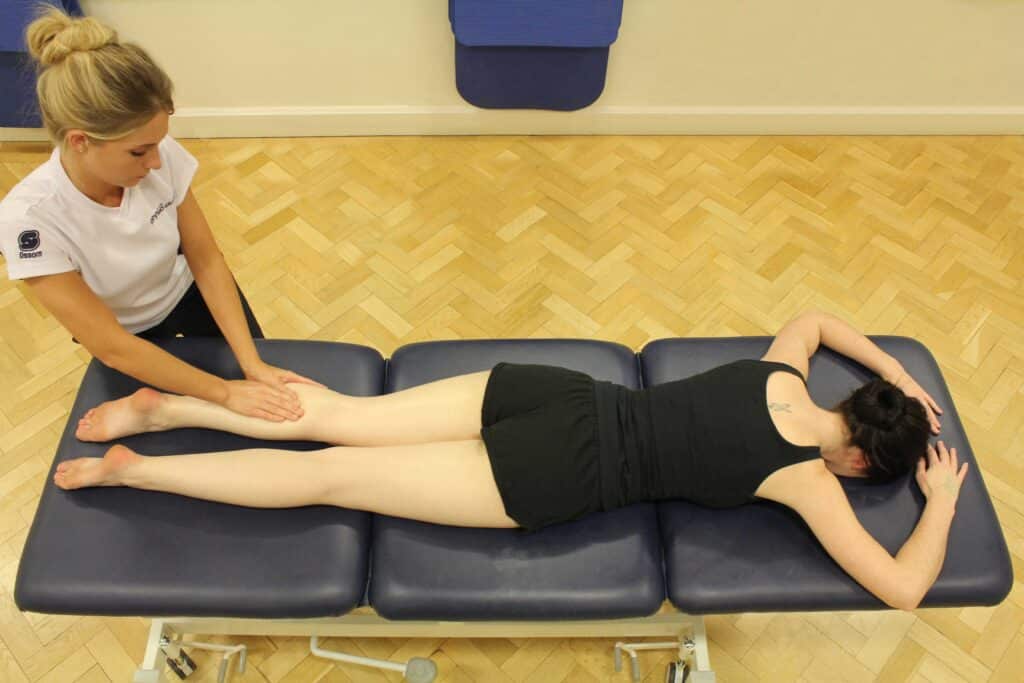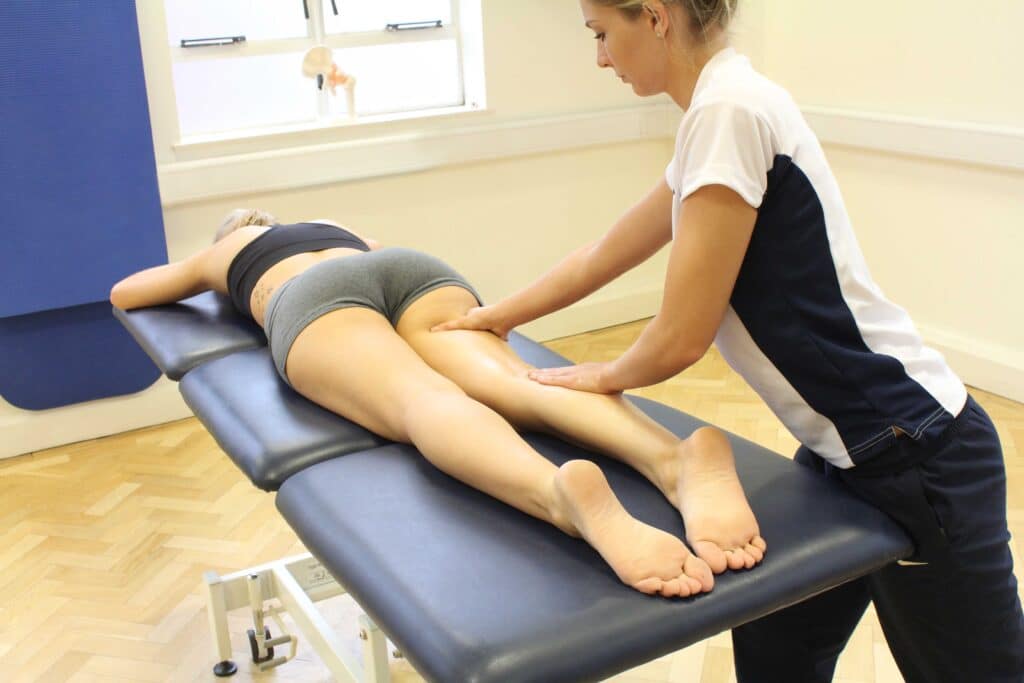Introduction
Does Lymphatic Drainage Help in Weight Loss: In the pursuit of achieving and maintaining a healthy body weight, individuals often explore various avenues, from dietary modifications to rigorous exercise routines. A lesser-known method that has received prominence recently is lymphatic drainage therapy. Weight loss seekers are interested in this alternative wellness approach that boosts the lymphatic system. Is lymphatic drainage effective for weight loss? We will examine the claims and facts of lymphatic drainage and its possible weight loss effects to gain a complete grasp of this intriguing therapy’s role in health and wellness.
Lymphatic drainage therapy has helped some people lose weight, although empirical proof is scarce. Instead of weight regulation, the lymphatic system supports the immune system and maintains fluid equilibrium.
Weight management is complicated by nutrition, exercise, genetics, and lifestyle. While lymphatic drainage therapy may help with weight loss, it should be considered a supplement. Before exploring alternative therapies, see a healthcare practitioner to discuss health goals and confirm they correspond with evidence-based weight management.

How do you drain your lymphatic system for weight loss?
By using gravity to drain stagnant fluid, inversions help bring blood and lymph from your feet and legs up to your kidneys to drain excess fluid, toxins, and stagnant energy. Brisk Walking: When walking your legs act as a natural pump that helps move the lymph fluid through the body.
Methods to Support Your Lymphatic System for Weight Loss
Stay Hydrated: Proper hydration is essential for lymphatic system function. Drinking enough water helps maintain the flow of lymph, making it easier for the system to remove waste and toxins from the body.
Healthy Diet: A balanced diet rich in fruits, vegetables, lean proteins, and whole grains supports overall health, including the lymphatic system. Reducing processed foods and excessive salt intake can help prevent water retention, which can give the appearance of weight gain.
Regular Physical Activity: Exercise plays a crucial role in maintaining lymphatic system health. Engaging in regular physical activity helps stimulate lymphatic circulation and supports the body’s natural detoxification processes.
Deep Breathing and Relaxation Techniques: Stress can negatively impact lymphatic function. Practices such as deep breathing, yoga, or meditation can help reduce stress and promote relaxation, benefiting the lymphatic system.
Skin Brushing: Dry skin brushing is a technique where you use a soft, natural-bristle brush to gently brush your skin in the direction of lymphatic flow. This practice is believed to stimulate lymphatic circulation and promote detoxification.
Lymphatic Drainage Massage: Lymphatic drainage therapy, administered by a qualified therapist, involves gentle, rhythmic massage techniques that promote lymphatic circulation. While not a weight loss method in itself, it can aid in detoxification and overall well-being.
Compression Garments: Compression garments like sleeves or stockings can assist in reducing swelling and promoting lymphatic flow in specific areas of the body. They are often used in cases of lymphedema or post-surgical recovery.
Can lymphatic massage help you lose fat?
A lymphatic drainage treatment (otherwise known as lymphatic massage) can help with fat burning as well as overall health. Lymphatic drainage therapy can help increase lymph flow, help the body shed excess weight, and offer a fresher look with less clogged pores and less puffy skin.
The Claims of Lymphatic Massage
Detoxification: Lymphatic massage is believed to stimulate the lymphatic system, enhancing the removal of toxins and metabolic waste from the body. This detoxification process is thought to optimize the body’s ability to metabolize fat efficiently.
Reduction of Swelling and Inflammation: Lymphatic massage may help reduce swelling and inflammation in the body, which can sometimes be attributed to water retention and bloating. By alleviating these issues, it is suggested that the body’s appearance can be more streamlined.
Improved Metabolism: Some proponents claim that lymphatic massage can boost metabolism by promoting better digestion and nutrient absorption. A more efficient metabolism is often associated with a higher potential for fat loss.
Stress Reduction: Lymphatic massage sessions are known for their relaxation benefits. By reducing stress and promoting a state of relaxation, it is argued that this therapy may indirectly support fat loss by mitigating stress-induced overeating or unhealthy eating habits.
Evaluating the Evidence
Lymphatic massage is popular for its potential benefits, including lowering fluid retention and promoting well-being, although there is little scientific proof that it aids fat reduction. The lymphatic system supports immunity and fluid homeostasis, not fat metabolism.
Diet, exercise, genetics, and lifestyle affect weight management. Lymphatic massage may have health benefits, but it is not a fat loss cure. As a complementary therapy, it promotes well-being.
Does lymphatic drainage burn calories?
Improving your lymphatic system will make you look less bloated, increase your energy which will, in turn, increase your metabolic rate helping you to burn calories more efficiently. Boost weight loss less prone to infections and other illness and have far fewer colds.
The Mechanism of Lymphatic Drainage
Lymphatic drainage, also known as lymphatic massage or lymphatic drainage therapy, involves gentle, rhythmic movements and manual techniques applied to the body’s lymphatic system. The goal is to stimulate lymphatic circulation, promoting the efficient removal of toxins, waste, and excess fluid. While this therapy is primarily associated with improving lymphatic function and reducing fluid retention, can it also lead to calorie burning?
The Calorie-Burning Aspect of Lymphatic Drainage
Lymphatic drainage therapy does not burn calories like aerobics or weight training. It is important to note that any physical activity, including lymphatic drainage, can burn calories. Lymphatic drainage burns calories depending on the duration, intensity, metabolism, and health of the patient.
Compared to dedicated calorie-burning exercises, lymphatic drainage burns few calories. The therapy’s ability to improve lymphatic function, reduce swelling, detoxify, and relax is its main benefit.
How long does it take to see results from lymphatic drainage?
Most clients see the physical effects of our lymphatic drainage massage for up to 6 hours. Long term results will improve with every treatment and you will start to look and feel noticeably better for up to a month each time.
Factors Affecting the Timeframe for Results
Individual Goals: The specific goals of each person undergoing lymphatic drainage can influence the time it takes to see results. For some, the primary goal may be reducing post-surgical swelling, while others may seek relief from chronic conditions or overall wellness. Different goals may require varying durations of treatment.
Frequency of Sessions: The frequency of lymphatic drainage sessions plays a crucial role in determining how quickly results become noticeable. Typically, a series of sessions is recommended, with some individuals opting for daily or weekly treatments, while others may choose a more spaced-out schedule.
Severity of the Condition: The severity of the condition or issue being addressed also affects the time it takes to see results. For minor swelling or discomfort, improvements may be noticed relatively quickly. However, chronic conditions or extensive post-surgical swelling may require more sessions and time to achieve desired outcomes.
Overall Health: An individual’s overall health and lifestyle factors, such as diet, physical activity, and stress levels, can influence the effectiveness of lymphatic drainage therapy. Those who maintain a healthy lifestyle alongside their treatments may experience quicker and more pronounced results.
What is the disadvantage of lymphatic massage?
Bruising and Swelling – Lymphatic massage can also lead to bruising and swelling, especially if the massage is performed too aggressively or with too much pressure. This can be particularly dangerous for individuals with certain medical conditions, such as haemophilia or other bleeding disorders.
Contraindications and Medical Concerns: Lymphatic massage may not be suitable for individuals with specific medical conditions or contraindications. People with congestive heart failure, kidney problems, infections, open wounds, deep vein thrombosis, or active cancer should consult with a healthcare professional before undergoing lymphatic drainage therapy. Inappropriate or untrained application of lymphatic massage in these cases could potentially worsen the condition.
Temporary Discomfort:
Therapists increase lymphatic circulation with delicate, rhythmic motions during lymphatic massage. Although the pressure is minimal, some people may feel momentary discomfort or tenderness, especially in sensitive or congested areas. This pain is usually moderate and temporary.
Lymphatic massage is usually performed by professional therapists and requires numerous sessions for best effects. It can make therapy expensive over time. Certain places may lack trained lymphatic massage providers, limiting accessibility.
Lymphatic massage may require multiple sessions to fully benefit. Treatment frequency and duration depend on client goals and needs.
Lymphatic massage has numerous positive effects, but scientific study is limited. Its benefits, especially for some medical disorders, may be unproven. Lymphatic massage should be treated as a supplemental therapy with realistic expectations.
Is it safe to do lymphatic massage everyday?
You could get a lymphatic massage everyday of your life and you would not be doing yourself any harm. (Unless of course you have advanced heart, kidney or liver disease) All in all, I tell my clients who are seeking a lymphatic massage for relaxation to come once or twice a month.
Safety Considerations
Individual Tolerance: Whether daily lymphatic massage is safe depends on an individual’s tolerance and specific needs. Some people may find daily sessions comfortable and beneficial, while others may experience discomfort or overstimulation with frequent treatments. It is crucial to listen to your body and adjust the frequency accordingly.
Qualified Practitioner: The safety of lymphatic massage depends significantly on the skill and expertise of the practitioner. A qualified and experienced therapist can adjust the intensity and duration of the massage to suit the individual’s needs, reducing the risk of adverse effects.
Contraindications: Certain medical conditions, such as congestive heart failure, kidney problems, infections, deep vein thrombosis, or active cancer, may contraindicate lymphatic massage or require special precautions. It is essential to consult with a healthcare professional or lymphatic massage therapist to ensure that daily sessions are safe, especially if you have underlying health issues.
Hydration: Lymphatic drainage therapy can stimulate the release of toxins and excess fluids. Staying well-hydrated is crucial to support the body’s detoxification process and minimize the risk of dehydration or electrolyte imbalances.
How do I know if I need lymphatic drainage?
While you can always come and see us for a lymphatic drainage massage even if you’re not exhibiting any specific symptoms, several signs indicate you may need one: You have congestion or fullness in your ears. You suffer from headaches. You feel fatigued or run down.
Signs and Symptoms Indicating a Need for Lymphatic Drainage
Swelling or Edema: One of the most common reasons individuals seek lymphatic drainage is persistent swelling or edema. This swelling can result from surgery, injury, medical conditions, or pregnancy, and lymphatic drainage can help reduce it.
Post-Surgical Recovery: After surgeries, especially cosmetic or lymph node-related surgeries, lymphatic drainage may be recommended to promote healing, minimize swelling, and aid in the removal of surgical byproducts.
Chronic Pain or Fatigue: Individuals with conditions like fibromyalgia or chronic fatigue syndrome may experience relief from symptoms through lymphatic drainage, as it can help improve circulation and reduce inflammation.
Immune System Support: If you frequently suffer from illnesses or have a compromised immune system, lymphatic drainage therapy may assist in enhancing immune function and overall health.
Detoxification: Some people seek lymphatic drainage as part of a detoxification regimen, believing it aids in the removal of toxins and metabolic waste products from the body.
How many times a week should I do lymphatic drainage?
For the best effects, a professional may recommend lymphatic drainage from once per month to once per week. For home use, they may also advise the person massage one to two body parts per day. Brief, regular home treatment can provide a short, daily relaxation experience and may benefit the lymphatic system.
Factors Influencing the Frequency of Lymphatic Drainage
Treatment Goals: The frequency of lymphatic drainage sessions often depends on your specific treatment goals. For some individuals, a single session may be sufficient to address occasional discomfort or swelling. However, if you have chronic conditions or more extensive treatment objectives, a series of sessions may be recommended.
Severity of Symptoms: The severity of your symptoms or condition plays a crucial role in determining session frequency. Individuals with severe swelling, lymphedema, or post-surgical recovery needs may benefit from more frequent sessions initially.
Individual Response: Each person’s body responds differently to lymphatic drainage therapy. Some individuals may experience rapid relief and improvements with fewer sessions, while others may require more extended and regular treatment to achieve the desired results.
Consultation with a Practitioner: Consulting with a qualified lymphatic massage therapist or healthcare professional is essential. They can assess your condition, goals, and overall health and recommend an appropriate treatment plan, including session frequency.
General Guidelines for Session Frequency
Initial Series: Lymphatic drainage sessions may be more frequent for post-surgical swelling, persistent edema, or lymphedema. Depending on your condition and therapist’s advice, everyday or several times a week.
After achieving your goals or symptom relief, you can enter a maintenance phase. During this phase, reduce sessions to weekly, bi-weekly, or monthly to preserve benefits.
For general wellbeing or minor discomfort, periodic or as-needed lymphatic drainage sessions may be sufficient. This could be every few months or as needed.
Listen to Your Body: Track your body’s responses and needs. If symptoms or pain return, schedule more sessions.

Conclusion
The lymphatic system primarily supports immune function and fluid homeostasis. Lymphatic drainage therapy may help with relaxation and some diseases, but there is no solid evidence that it aids weight loss.
A balanced diet, regular exercise, and lifestyle changes are needed to manage weight. Complementary therapies like lymphatic drainage may enhance well-being, but they should not be used alone to lose weight.
Individuals interested in exploring lymphatic drainage therapy or any alternative wellness practices should do so with the guidance of healthcare professionals and maintain realistic expectations regarding their potential outcomes. The best approach to weight management continues to be grounded in evidence-based strategies that consider the complex interplay of factors contributing to an individual’s health and weight goals.

